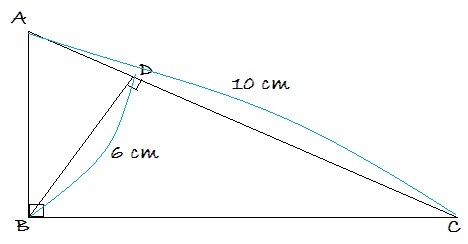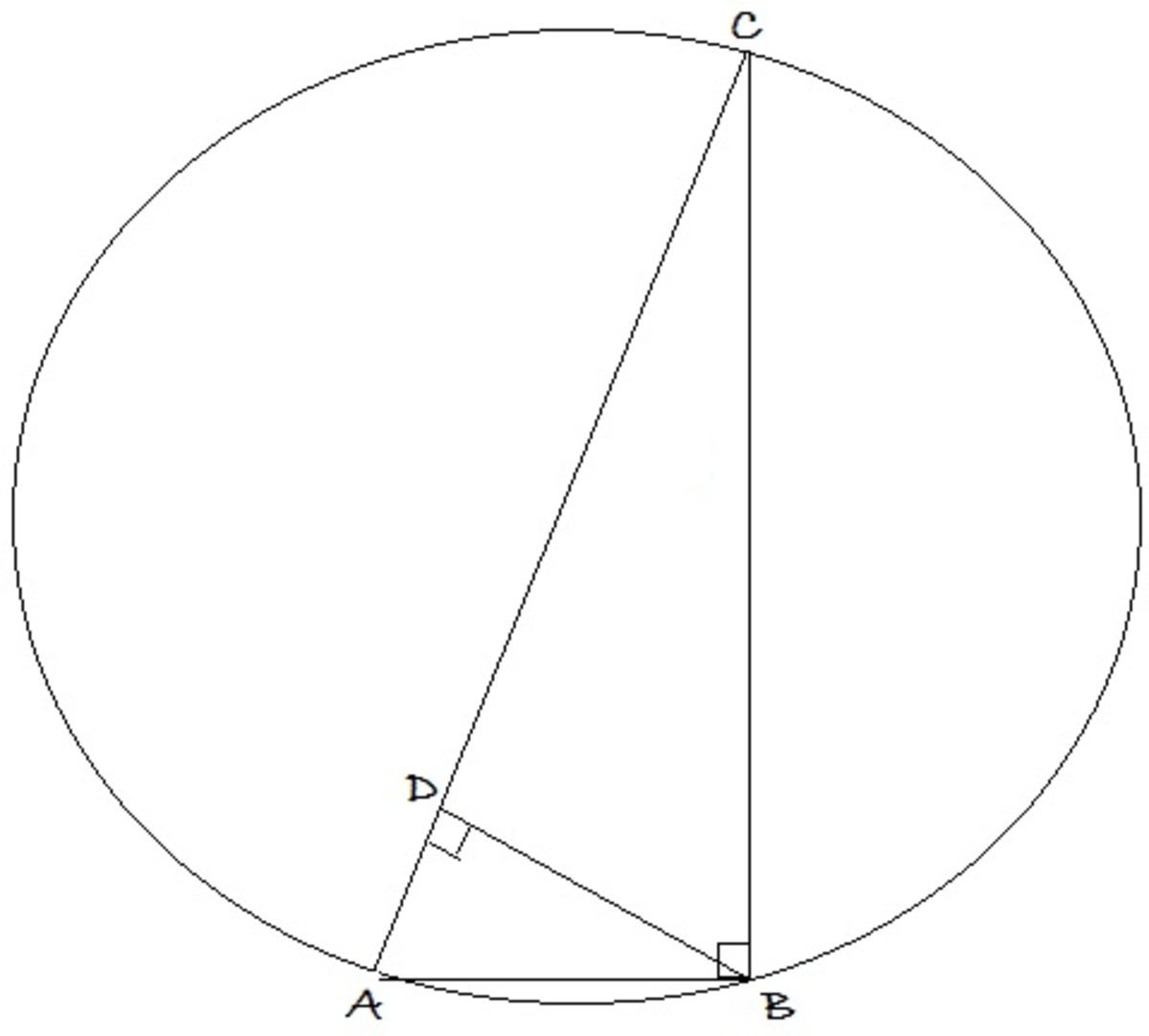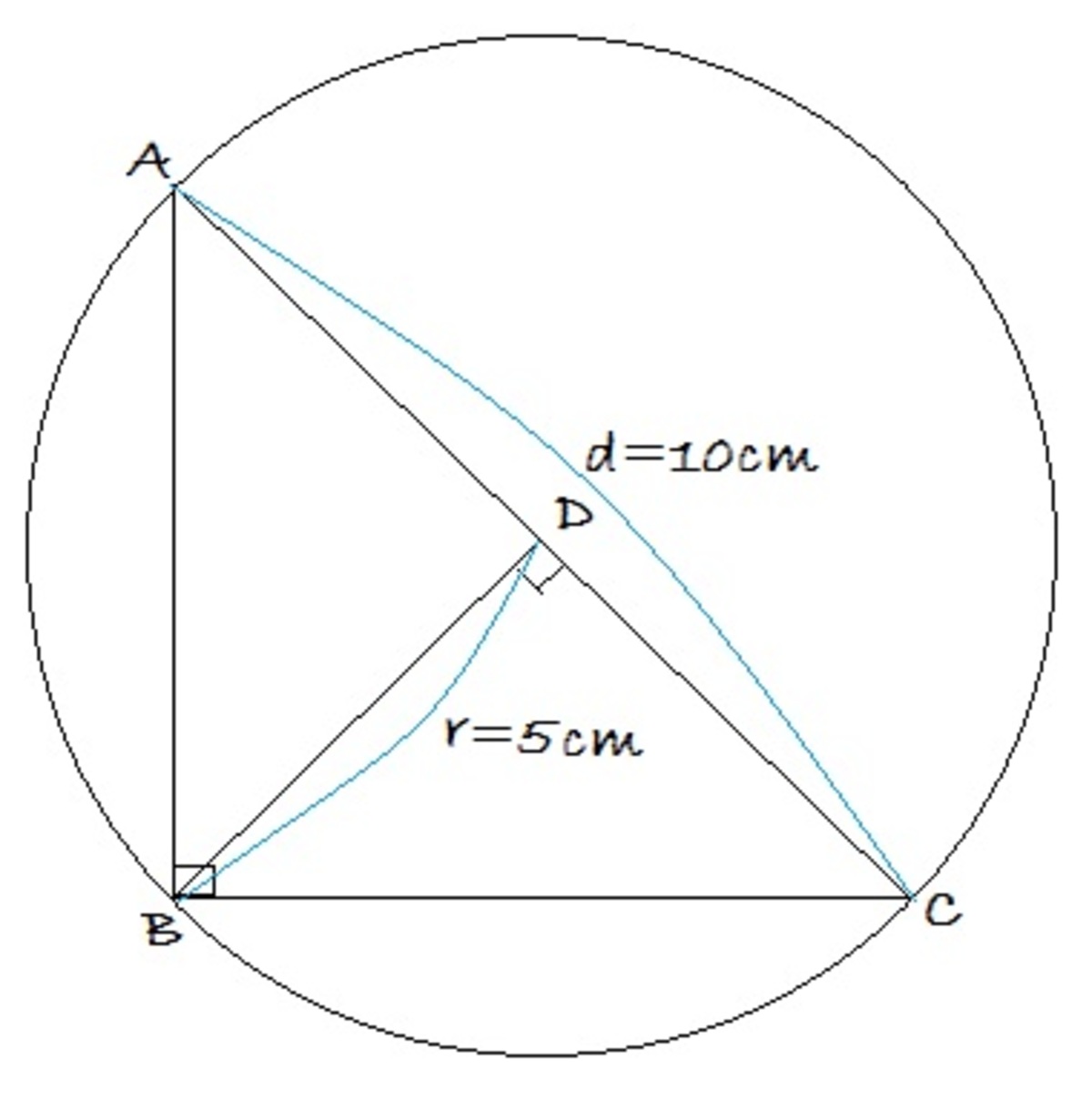Area Games 2K16
Find the area of a right triangle whose hypotenuse is 10 cm and altitude to its hypotenuse is 6 cm in sq cm.

Note : The area of a triangle is equal to .
This section requires Javascript.
You are seeing this because something didn't load right. We suggest you, (a) try
refreshing the page, (b) enabling javascript if it is disabled on your browser and,
finally, (c)
loading the
non-javascript version of this page
. We're sorry about the hassle.
Is it possible for a right triangle of hypotenuse 1 0 c m to uphold a perpendicular to itself of 6 c m ? Let's see: Firstly, angle in a semicircle is 9 0 degrees. So with A C as diameter: Now adjusting the right triangle to get the maximum altitude to the hypotenuse,
Now adjusting the right triangle to get the maximum altitude to the hypotenuse,
 Therefore, we find that the maximum altitude to the hypotenuse of a right triangle is only when it is an isosceles right triangle. Clearly, as specified,
A
C
=
1
0
c
m
is the diameter of the circle as well as the triangle's hypotenuse. So the altitude to the hypotenuse is from the center of the circle to the circumference, which is its radius. Clearly, the radius is
5
c
m
. So, we come to a conclusion that a right triangle of hypotenuse
1
0
c
m
cannot have a altitude to itself of length more than
5
c
m
.
6
c
m
is more than
5
c
m
, so such a triangle doesn't exist. Therefore, the question is flawed.
Therefore, we find that the maximum altitude to the hypotenuse of a right triangle is only when it is an isosceles right triangle. Clearly, as specified,
A
C
=
1
0
c
m
is the diameter of the circle as well as the triangle's hypotenuse. So the altitude to the hypotenuse is from the center of the circle to the circumference, which is its radius. Clearly, the radius is
5
c
m
. So, we come to a conclusion that a right triangle of hypotenuse
1
0
c
m
cannot have a altitude to itself of length more than
5
c
m
.
6
c
m
is more than
5
c
m
, so such a triangle doesn't exist. Therefore, the question is flawed.
Or, a solution pertaining to calculus:
Let the triangle again be fixed into a semicircle.
As shown, A C is the triangle's hypotenuse as well as the semicircle's diameter. D is a random point on the non-diametrical part of the circle. O D is joined. Evidently, O D is the radius and is half the hypotenuse length. Now C is a point of the diameter A B such that C D ⊥ A B . Clearly, D C is the perpendicular from the hypotenuse. A C and B D are joined. Now, moving our focus towards right triangle O C D , we have to find the maximum value of D C . Let D C = y , O C = x and O D = ( h / 2 ) (where, A B = h ). Now, applying Pythagorean Theorem in tr. O C D , we have:
Since we have to find the extrema of y (if exists any, as such), we differentiate it with respect to x and equate it to 0. We find d x d y = 0 gives x = 0 . Now substituting x = 0 in d x 2 d 2 y evaluates to h − 2 , while we know that h is the semicircle diameter and is positive. Clearly, h − 2 is negative and so is d x 2 d 2 y . We know that if we differentiate a function and equate its first derivative to 0 and find the value of the parent variable and substitute it in its second derivative and it yields a negative value, then a maximum value of the function exists and is equal to the value of the function when its parent variable is equal to its value obtained while equating the first derivative to 0 . Now relating to our case, we get x = 0 from the first derivative. Hence substituting x = 0 in the function leads y = h / 2 , which is the maximum value of y .
So, the maximum height of the perpendicular to the hypotenuse of a triangle is equal to half of the hypotenuse.